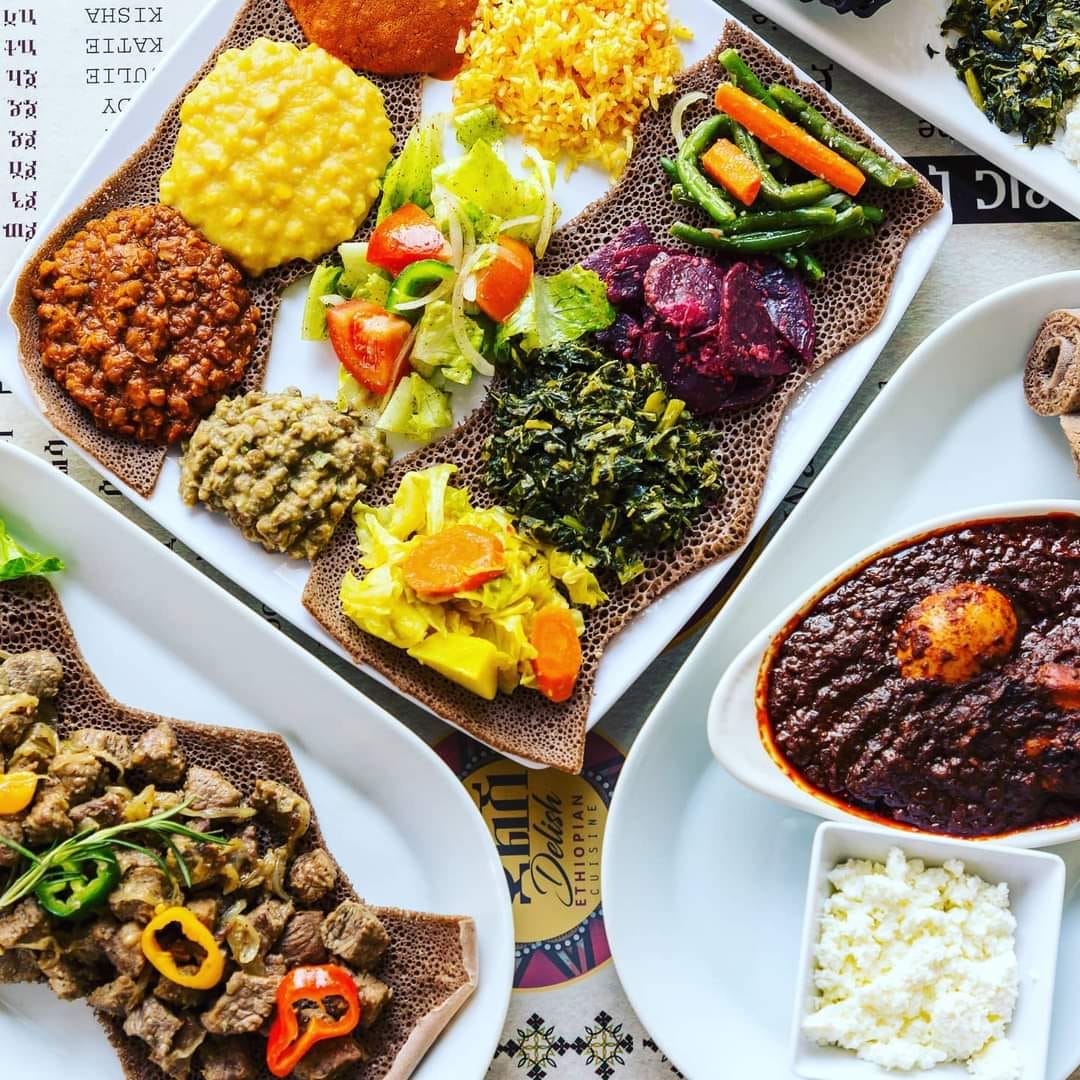
22 Sep Honoring Injera & the Communal Nature of Ethiopian Food
By Ashleigh Fields
The prismatic, polychromatic, and increasingly popular staples of Ethiopian cuisine are deeply rooted in a communal culinary tradition. And it all starts with injera.
Made from teff, the world’s smallest grain, injera is a simple, spongy flatbread that serves as the melting pot for the cuisine’s mouthwatering stews and medley of spices. All the flavors of the Ethiopia are welcome inside a warm piece of injera. It’s representative of the core spirit and philosophy of Ethiopian cooking — that all are welcome to, and have a place at, the table.
Serving many from a single platter, friends, families, and communities come together to share the array of meats, stews, and vegetables that are carefully spread out on a slab of injera. Using their hands, each person tears a piece off from the edges, scooping up whatever stew or piece of meat is nearby. Could be Doro Wot, with its spiced butter and savory thickness. Or Misir Wot, with its tender, earthy lentils. Or, ahhhh, Sega Wot, with its rich, saucy pieces of beef.
Not only is this an act of community — eating from the same plate — it can be an act of intimacy too, going as deep as eating from another’s hand.
“Gursha is an Amharic word that means ‘mouthful,’ and it also means a bonus, a tip, or even a bribe,” one writer explains. “When you perform gursha at a meal, you take a morsel of food — often a very large one — wrapped in injera and place it into the mouth of someone else at the table. Then, the person you’ve just honored with a gursha returns the favor. The elderly, or the guests at someone’s home, will often receive the first gursha to show them respect.”
Click here for our list of the best Ethiopian restaurants in the country. Take a loved one, or several loved ones. There’s enough injera for everybody.
RELATED: Ethiopian Coffee Ceremony with Addis NOLA Ethiopian Kitchen


No Comments